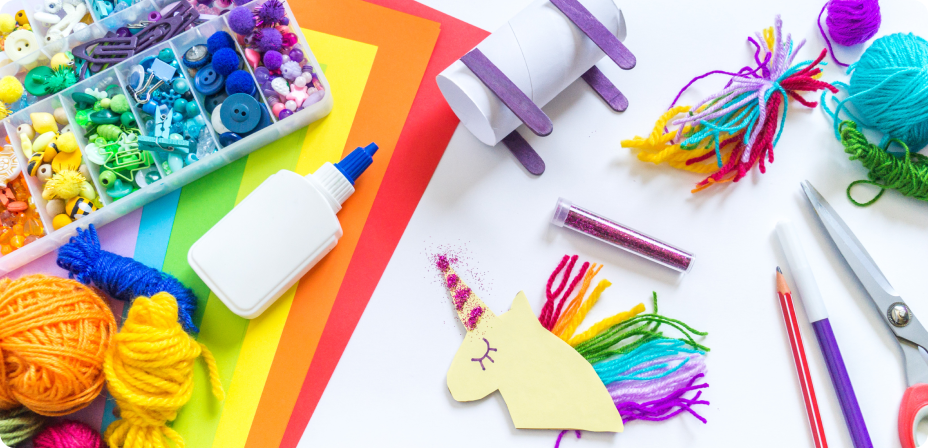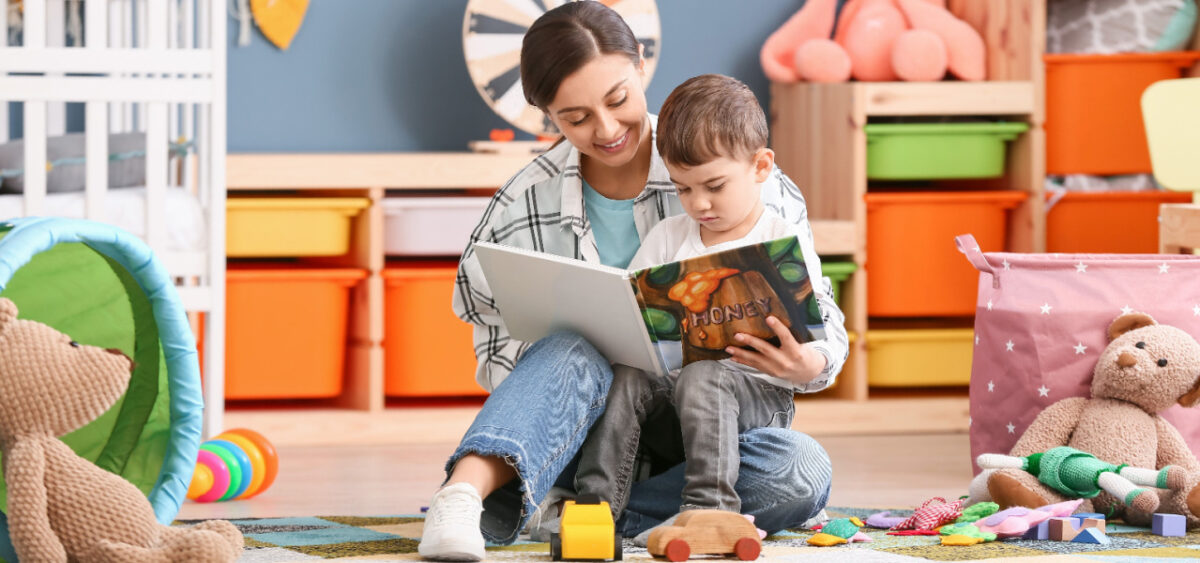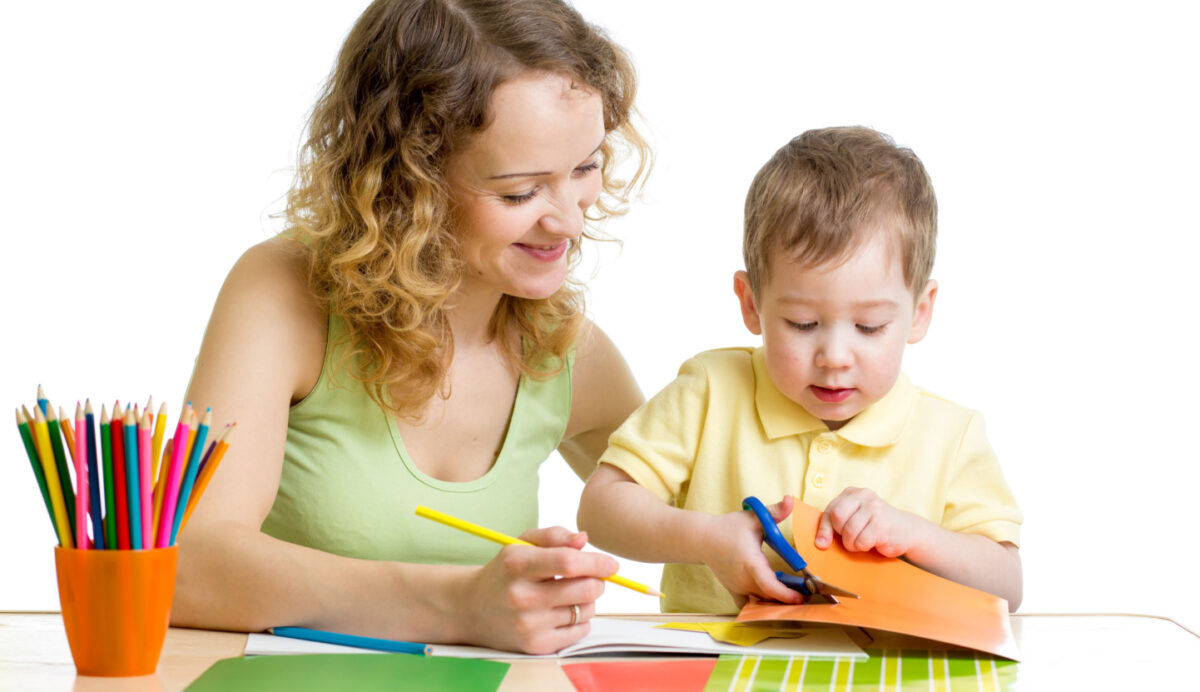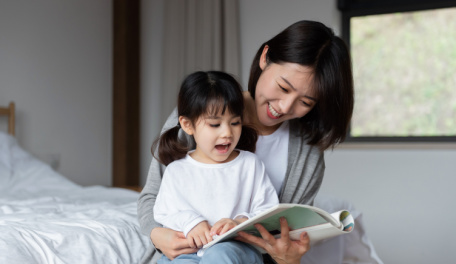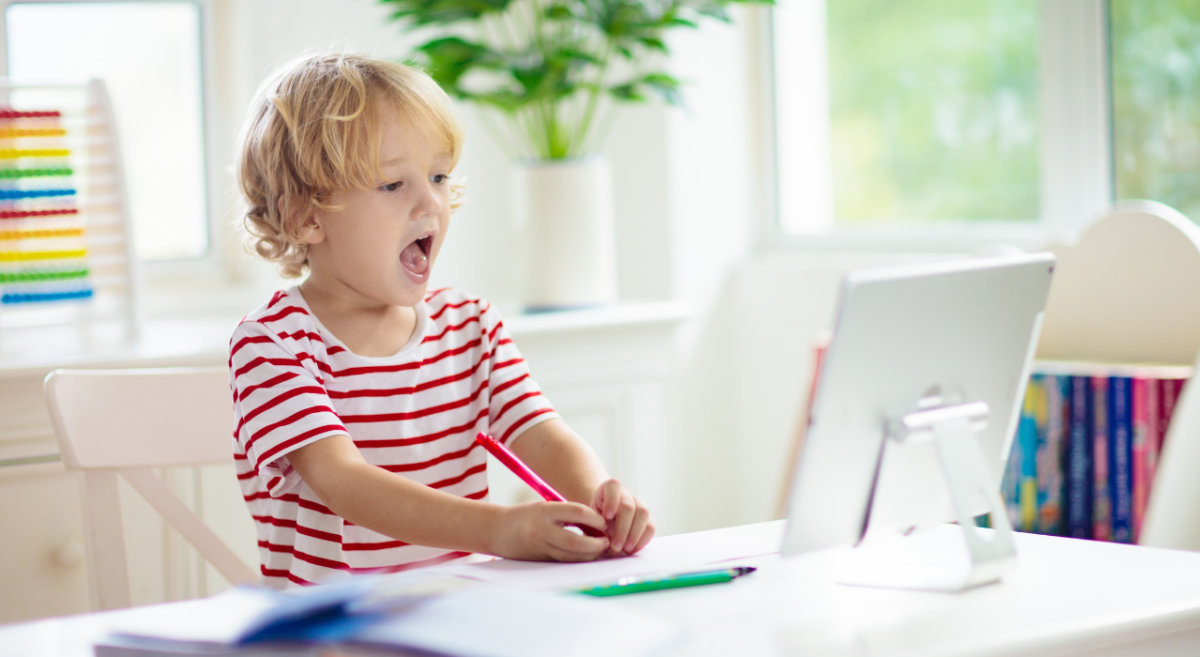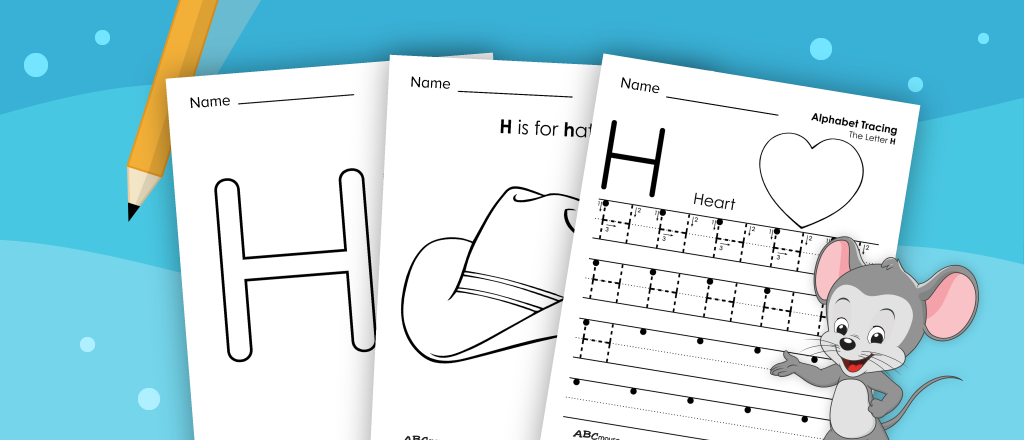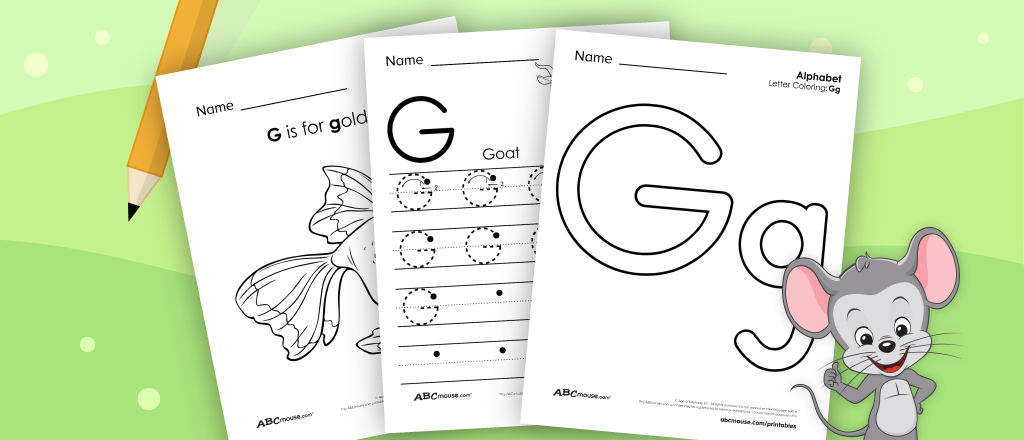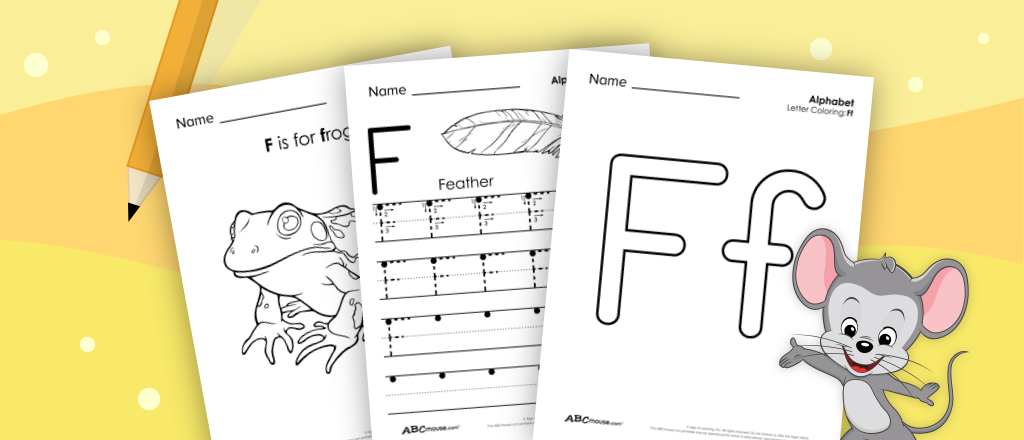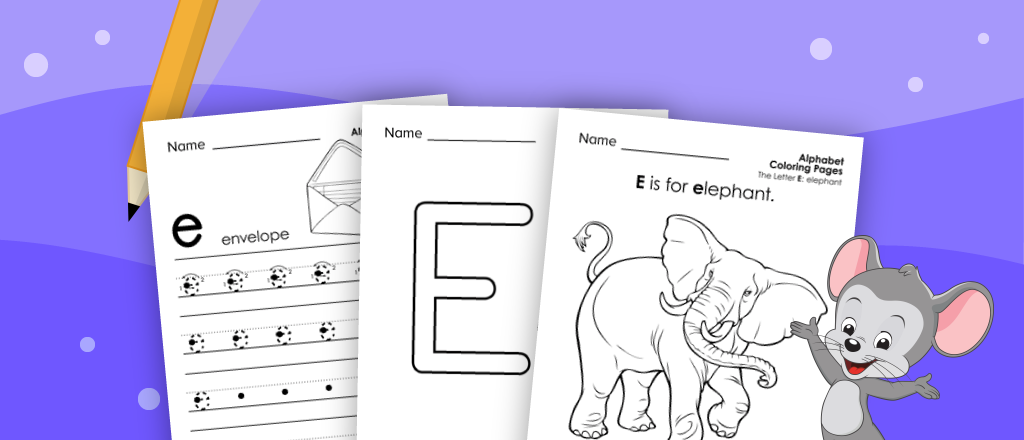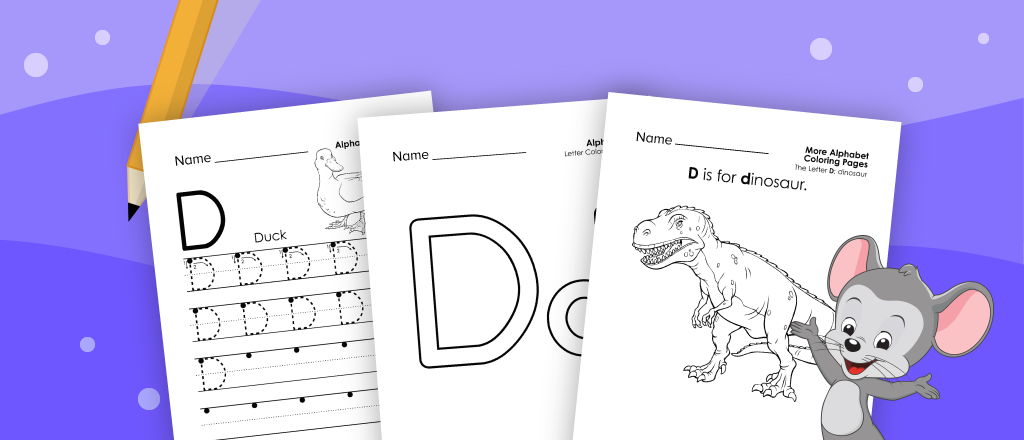Fun and Engaging Letter Sound Activities for Young Children
Share
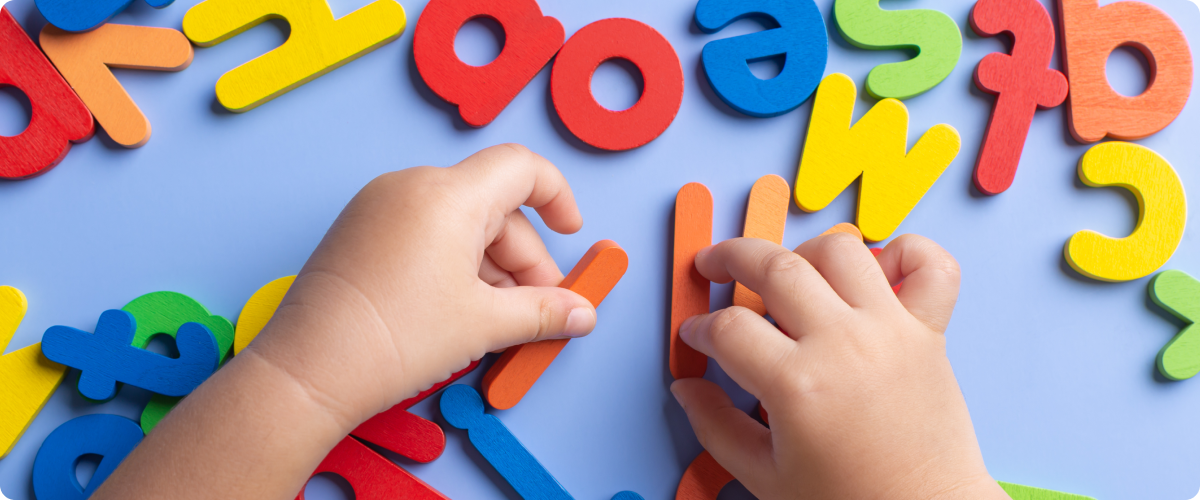
As parents and educators, we all want to give our young children the best foundation for success in reading and writing. One crucial step in this journey is teaching them letter sounds, an essential skill for decoding words.
The ABCmouse Preschool Reading Program provides structured, engaging activities designed to build letter sound knowledge and phonics skills in a fun and interactive way.
To engage children aged 3-8 in their learning journey, we’ve gathered a list of ten interactive and educational activities that can make learning letter sounds more fun and effective.
1. Alphabet Sensory Bin
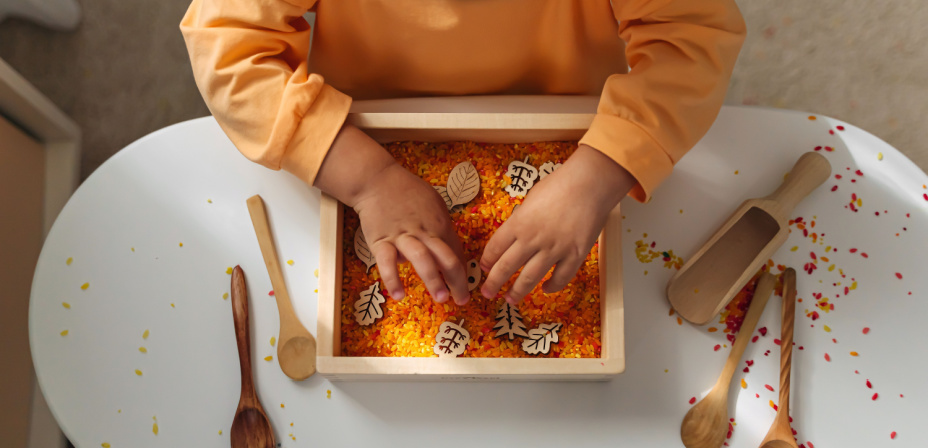
How to Play:
To create an alphabet sensory bin for teaching letter sounds, begin by gathering a variety of materials that represent different letters of the alphabet. You can include small objects, such as miniatures or toys, that start with each letter sound. Fill a large container or bin with sensory materials like rice, sand, or small foam balls. Then, bury the objects in the sensory material.
Provide your child with tools like spoons, plastic tweezers, or brushes to explore the sensory bin and uncover the objects. As your child discovers an object, encourage them to say the letter sound and match it to the correct letter.
Example:
If the letter “A” is represented by an apple, bury the apple in the sensory material. When your child uncovers it, prompt them to say the sound /a/ and recognize that it corresponds to the letter “A.” Repeat this process for different letters and objects, allowing your child to engage with the sensory bin and practice their letter sound recognition skills.
Benefits of this Activity:
- Creating an alphabet sensory bin helps teach letter sounds because it engages multiple senses and provides a hands-on learning experience. By including various textures and materials, such as rice or sand, children can explore the sensory bin using their sense of touch.
- This tactile experience helps build neural connections in the brain, making it easier for children to remember and recognize letter sounds. Additionally, the visual aspect of the sensory bin, with objects and letters arranged in a playful and interactive way, aids in letter-sound association.
- The act of uncovering the objects and saying the letter sounds out loud helps reinforce the auditory component of learning letter sounds. By involving different senses, the alphabet sensory bin provides a play-based approach to teaching letter sounds, promoting better retention and understanding for young learners.
2. Letter Sound Hunt
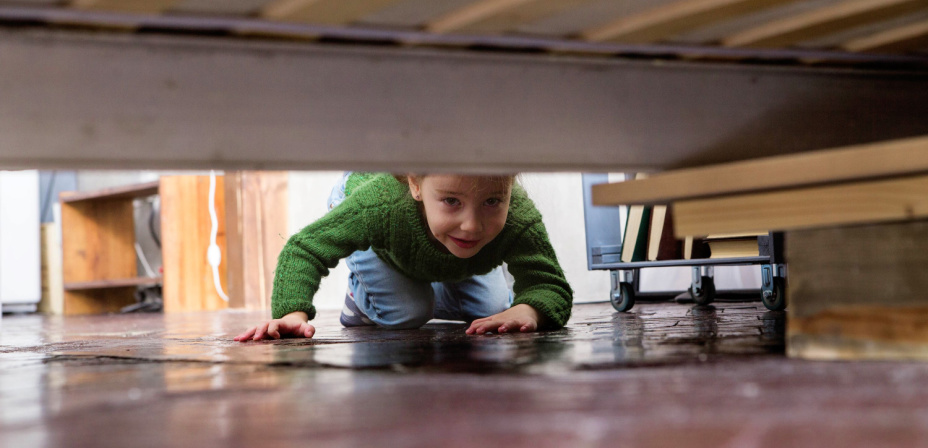
How to Play:
To do this activity, you will need a set of flashcards or small objects for each letter of the alphabet. Scatter the flashcards or objects around the room or in a designated area, and encourage your child to go on a hunt to find each letter. As they find each letter, ask them to say the letter sound out loud. This activity combines physical movement, visual stimulation, and auditory learning, making it a great way to reinforce letter sounds.
Example:
For example, when doing the Letter Sound Hunt, your child may find a flashcard or an object that represents the letter “B.” They can pick it up and say “buh” or “bee” for the sound the letter “B” makes. They can continue the hunt until they have found and correctly identified the sounds for all the letters of the alphabet. You can make the activity more exciting by timing your child or by providing small rewards for each correct answer.
Benefits of this Activity:
- By physically searching for the letters, your child is engaged in active learning , as well as having fun and getting some movement.
- It engages multiple senses and learning modalities.
- Associating the letter sound with a visual representation helps grow letter-sound recognition and appeals to your child’s auditory learning as they say the letter sounds out loud.
3. Phonics Obstacle Course
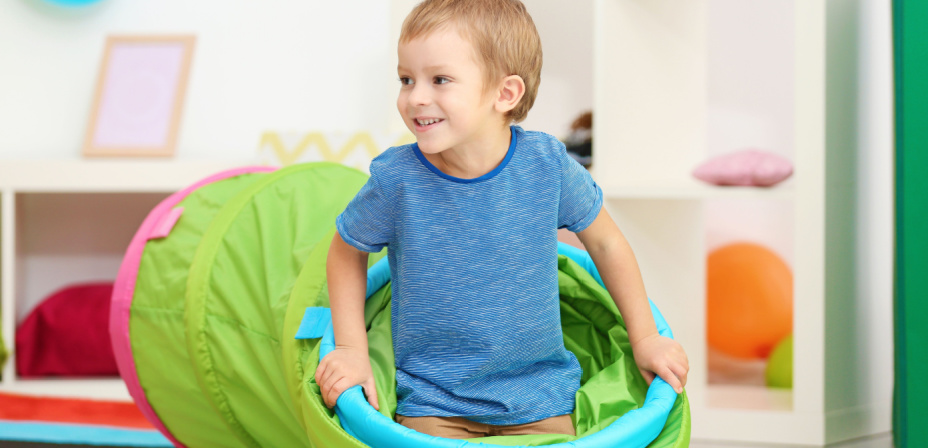
How to Play:
Start by setting up a series of stations, each representing a different letter sound. At each station, place objects and visuals that begin with the corresponding letter sound.
Arrange the stations in a specific order so that your child can follow a path through the obstacle course, encountering and interacting with various phonics examples along the way. This activity will not only encourage physical movement, but also foster letter sound recognition and critical thinking skills.
Example:
At the first station for the letter ‘B,’ place a bucket filled with balls and a picture of a bee. For the letter ‘M,’ set up a station with a box of markers and a poster of a monkey. At the ‘S’ station, have a tray of sand with seashells and a sign illustrating a snake. You can use alphabet charts, flashcards, or even online resources to gather inspiration for different stations.
Benefits of this Activity:
- It combines movement, visual stimulation, and hands-on learning. By physically moving through the obstacle course, children engage their whole body in the learning process, which enhances their memory and understanding of letter sounds.
- The visual aids at each station help reinforce the association between the letter and its sound, making it easier for children to remember and recognize the sounds in future reading and writing activities.
4. Magnetic Letter Match
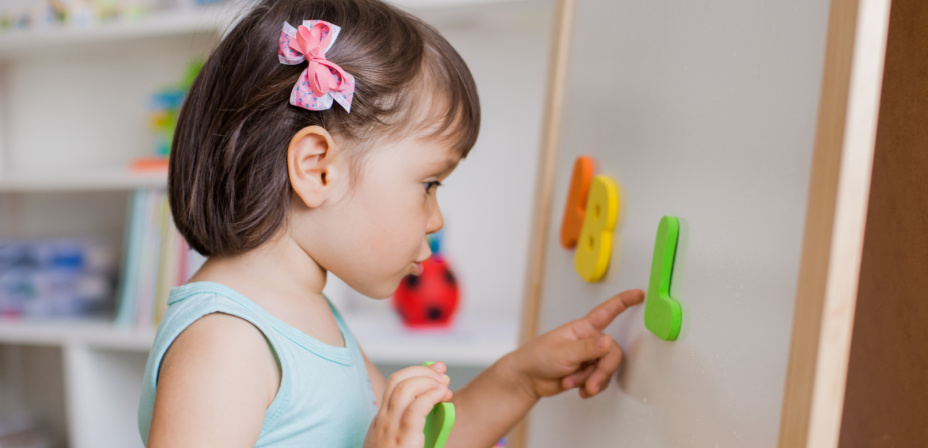
How to Play:
To do this activity, you will need a set of magnetic letters and a magnetic surface, such as a whiteboard or refrigerator. Start by choosing a few letters and placing them randomly on the magnetic surface. Then, encourage your child to find the matching letter from the set and place it next to the magnetic one. You can also say the letter sound aloud to reinforce learning.
Example:
Let’s say you choose the letter “A” and place it on the magnetic surface. You can then ask your child to find the matching letter “A” from the magnetic letter set and place it next to it. As they do this, you can say “A” and emphasize the letter sound. Repeat this process with a few more letters, such as “B,” “C,” and “D,” and watch as your child becomes engaged in the activity and starts practicing their letter sounds.
Benefits of this Activity:
- It provides a hands-on learning experience that engages children and motivates them to participate actively.
- The visual and tactile nature of this activity helps children reinforce their knowledge of letter shapes and sounds. By physically manipulating the magnetic letters, children are able to connect the visual representation of the letter with its corresponding sound.
- Magnetic letter match allows for repetition and reinforcement, which are crucial for learning. As your child matches the letters and hears the corresponding sounds, the activity helps solidify their knowledge and build a strong foundation for phonics and reading skills.
5. Sound Sort
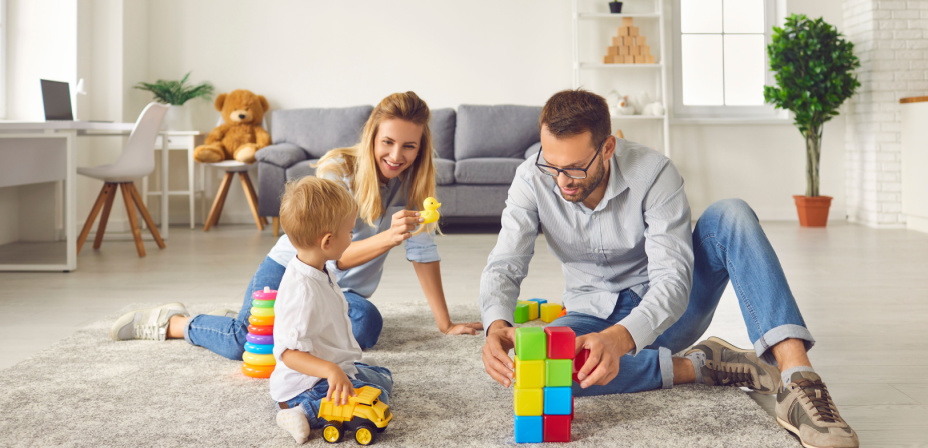
How to Play:
Gather a collection of objects or pictures that correspond to different letter sounds. For example, you can have a toy car for the “C” sound, a ball for the “B” sound, and so on. Then, invite your child to sit with you and present the different objects one by one. As you show each object, ask your child to identify the sound it starts with. Encourage them to say the letter sound aloud and give them positive reinforcement for their effort.
Example:
For the letter “D,” you can include items like a doll, door, and dog. For the “F” sound, you can have a feather, fish, and frog. Each object should clearly represent its corresponding letter sound to avoid confusion. You can also mix uppercase and lowercase letter cards and ask your child to match the objects with the correct letters, adding an additional layer of learning and challenge to the activity.
Benefits of this Activity:
- It provides a multi-sensory approach to learning. By using visual aids such as objects or pictures, children can link the letter sound with a concrete representation, making it easier for them to understand and remember.
- This activity promotes active engagement and participation. As children actively identify and sort objects based on their letter sounds, they are actively processing and practicing the sounds, which can help reinforce their learning.
- The Sound Sort activity allows for repetition and reinforcement. Consistently practicing letter sounds with different objects and having children say them aloud helps to solidify their understanding and can strengthen their letter sound recognition skills over time.
6. Letter Sound Bingo
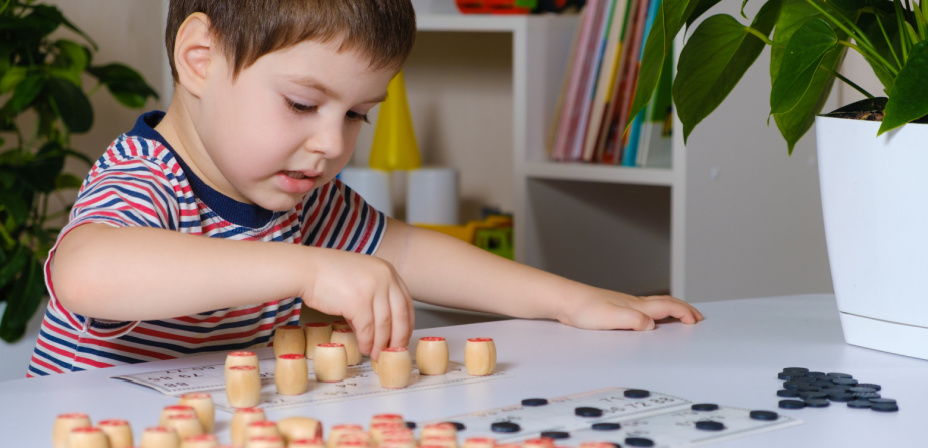
How to Play:
To play Letter Sound Bingo, you will need a set of Bingo cards with different letters written on them, as well as letter tiles or small objects that represent each letter sound. Start by explaining to your child the concept of letter sounds and how each letter makes a different sound. Shuffle the letter tiles and place them or your small objects in a bag or a bowl. Give each player a Bingo card and explain that the objective is to match the letter sounds on the tiles (or that the objects start with) with those on the cards and form a horizontal, vertical, or diagonal line by covering five squares in a row.
Example:
If using letter tiles, begin by pulling a tile out of the bag and saying the letter out loud. See if your child can identify that letter on their Bingo card.
If using small objects, such as a ball, car, or an apple, pull one out of your bag and ask your child to say what it is. Then ask them what letter sound the objects starts with. Finally, have them look for that letter on their Bingo card.
If they have that letter sound, they can cover it with a marker or a small object. Repeat this process with different letter sounds and corresponding objects.
Benefits of this Activity:
- By incorporating visuals and objects that represent the sounds, it can make the learning process more engaging and interactive.
- This activity gives children an opportunity to recognize the connection between letters and their corresponding sounds, which is a fundamental skill for reading and spelling.
- Playing Bingo adds an element of fun and competition, motivating children to actively participate and reinforce their letter sound knowledge.
- As they listen to the letter sounds being called out and scan their cards for matches, children are practicing their phonemic awareness and developing their ability to differentiate between sounds.
7. Songs and Rhymes
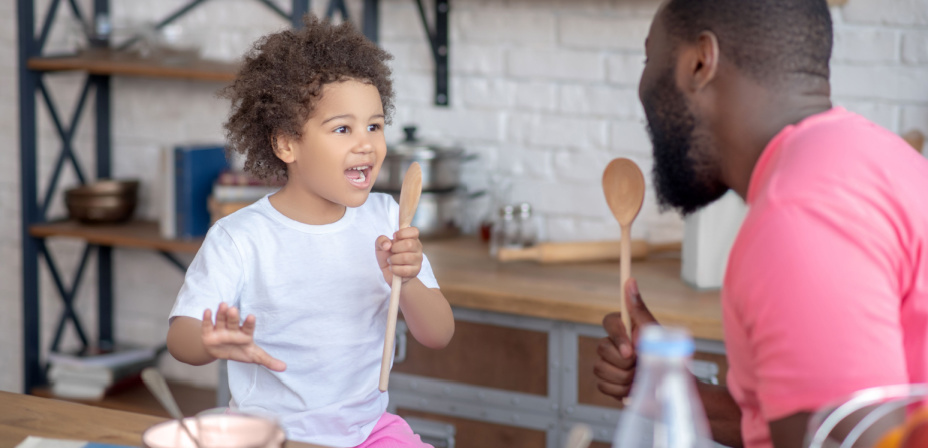
How to Play:
First, choose songs and rhymes that focus on specific letter sounds or target vocabulary. You can find a variety letter songs on ABCmouse.com.
Next, introduce the song or rhyme to your child by singing or reciting it together. Encourage them to clap along or move their bodies in rhythm. After practicing a few times, challenge your child to identify the letter sound or specific words in the song or rhyme. Make sure to repeat the activity frequently to reinforce the letter sounds and build their phonemic awareness.
Example:
ABCmouse offers an extensive collection of songs and rhymes that can be a great resource for teaching letter sounds. For example, the Letter A Song focuses on the letter “A” and introduces words like “apple” and “alligator.” Another fun rhyme is “Baa, Baa, Black Sheep,” which emphasizes the letter “B” and includes the word “bag.” These songs and rhymes engage children through catchy tunes and repetition, making it easier for them to remember letter sounds and associated words.
Benefits of this Activity:
- The catchy melodies and repetitive nature of songs help children develop phonemic awareness, which is crucial for their reading and writing skills later on.
- Additionally, the rhythmic patterns in songs and rhymes create a multisensory experience, enhancing memory retention. By actively participating in these activities, children’s auditory processing skills can improve, allowing them to distinguish between different letter sounds and connect them with corresponding words.
8. Playdough Letter Sounds
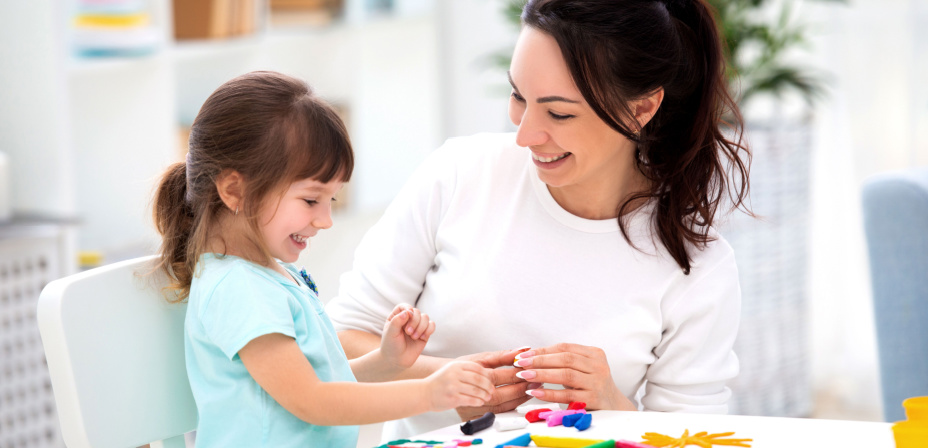
How to Play:
Gather some playdough in various colors and a set of alphabet letter cutters or plastic letters. Start by rolling out the playdough into long ropes or snakes. Then, use the letter cutters or plastic letters to press into the playdough and create letter shapes. As you or your child makes each letter, encourage them to say the corresponding sound.
Example:
Begin with simple letters such as “A” and “B.” Roll out the playdough and shape it into an “A,” saying the sound /a/ as you do so. You can repeat this process with the letter “B,” saying the sound /b/. Encourage your child to join you in creating the shapes and making the sounds. Once they are comfortable with these letters, move on to more challenging ones, such as “C” or “D.”
Remember to keep the activity fun and enjoyable, allowing your child to explore and learn at their own pace.
Benefits of this Activity:
- The playdough letter sounds activity is an effective teaching tool because it combines multiple approaches to learning.
- By engaging in hands-on play, children are able to interact with materials, feel different textures, and develop fine motor skills. As they manipulate the playdough to create letter shapes, they are also reinforcing their understanding of letter formation.
- By saying the corresponding letter sound as they create each letter, children are practicing developing their letter-sound knowledge. This activity helps children associate the written letter form with the sound it represents, laying a strong foundation for early reading and spelling success.
9. Letter Sound Scavenger Hunt
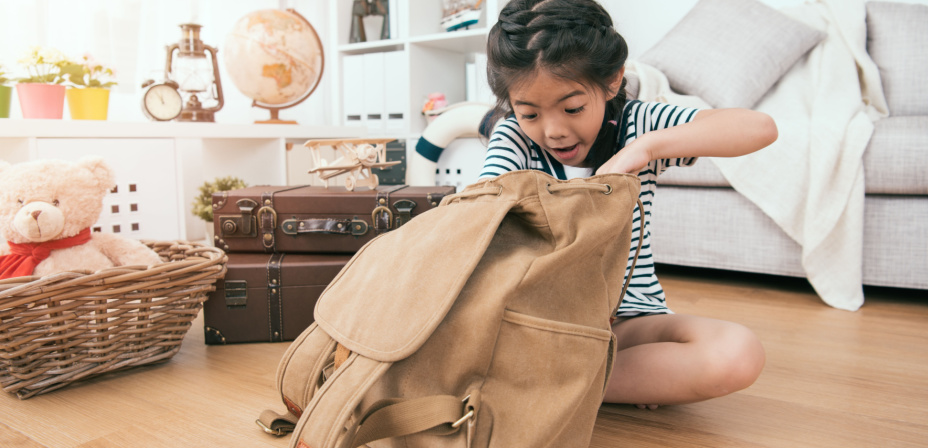
How to Play:
Start by choosing a particular letter sound you want to focus on, such as the sound of the letter “S.” Then, write down a list of familiar objects or items that begin with that letter sound. Next, hide those objects around the house or in your backyard, making sure they are easily accessible to your child. Finally, give your child a small basket or bag and encourage them to search for the hidden items, using their listening skills to identify words that start with the chosen letter sound.
Example:
Let’s say you’ve selected the letter sound “P” for your scavenger hunt. You might choose objects like a pencil, a stuffed penguin, and a picture frame. Hide these items in different rooms, such as placing the pencil on a desk, the plush toy on a couch, and the picture frame on a bookshelf. As your child discovers each object, encourage them to say the name of the item out loud and emphasize the starting letter sound.
Benefits of this Activity:
- This activity encourages children to actively listen for the sound at the beginning of words and associate it with real objects they can see and touch.
- By physically searching for objects, children are also incorporating movement into the learning process, which can aid in memory retention and overall understanding.
- This hands-on approach to learning helps children make meaningful connections between sounds and letters, laying a strong foundation for future reading and language skills.
10. Letter Relay Race

How to Play:
To set it up, gather a variety of items around the house that represent different letters. For example, a toy apple for the letter A, a toy ball for the letter B, and so on. Lay out the items in a straight line or create a small obstacle course in your living room or backyard.
Next, divide the children into teams or have them race individually. Each child should stand at the starting line and when you call out a letter sound, they need to run to the item that represents that letter and bring it back to the starting line. The next child in line can only start once the previous child has returned from their run. The first team or child to complete the race wins!
Example:
Let’s say you call out the letter sound “B.” The child should quickly identify the toy ball as representing the letter B and run to grab it.
Another example could be calling out the letter sound “C.” The child would then run to find the toy cat that you placed on the course and bring it back. This not only helps them recall the letter sound but also reinforces letter recognition and object association.
Benefits of this Activity:
- The physical movement and excitement of racing creates a positive learning experience. By associating each letter sound with a specific item, children are able to make connections between the sounds and the corresponding letters.
- This activity encourages listening skills as the children need to pay attention to the letter sound being called out.
- They also get to practice visual tracking as they search for the correct item.
- By engaging multiple senses and involving physical activity, the letter relay race helps reinforce letter sounds and aids in the development of early literacy skills.
Engaging young children in letter sound activities can help lay a strong foundation for their future literacy skills. By incorporating these ten interactive and educational activities into your routine, whether at home or in the classroom, you can create an opportunity to transform learning into an enjoyable adventure. Remember to make it fun and celebrate your child’s progress along the way.
ABCmouse Letter Sound Games & Activities
For more interactive and engaging letter sound activities, check out ABCmouse.com. The ABCmouse early learning educational app offers a wide range of games and activities designed to help young children learn and master letter sounds.
ABCmouse covers the following letter sound concepts:
- Letter Recognition
- Phonics
- Letter Blending
- Letter Formation
- Letter Sound Correspondence
- And much more!
Get started with the ABCmouse app today and watch your child work to grow their letter sound skills in a fun and interactive way!
Related Blog Articles
Related Activities
-
Free Printable Letter H Worksheets
Dive into the alphabet with our preschool worksheets for the letter H! Perfect for early readers, these printables offer coloring, tracing, and fun activities to enhance…
-
Free Printable Letter G Worksheets
Explore the wonders of the letter G with our engaging preschool worksheets, perfect for young learners beginning their reading journey. These free printable activities offer coloring,…
-
Free Printable Letter F Worksheets
Discover engaging preschool worksheets for the letter F, perfect for mastering alphabet recognition and sounds. From coloring to tracing, these activities make learning fun. Explore more…
-
Free Printable Letter E Worksheets
Explore engaging preschool worksheets for the letter E, featuring alphabet coloring, letter tracing, and activities to enhance recognition and sounds of the letter E. Perfect for…
-
Letter Sound Activities for Young Children
Explore fun and engaging letter sound activities for children aged 3-8. Learn interactive methods like Alphabet Sensory Bins, Phonics Obstacle Courses, and more to enhance early…
-
Free Printable Letter D Worksheets
Enhance preschool learning with free printable worksheets for the Letter D! Engaging activities include alphabet coloring pages, letter tracing, and fun tips for letter recognition. Perfect…

